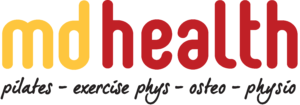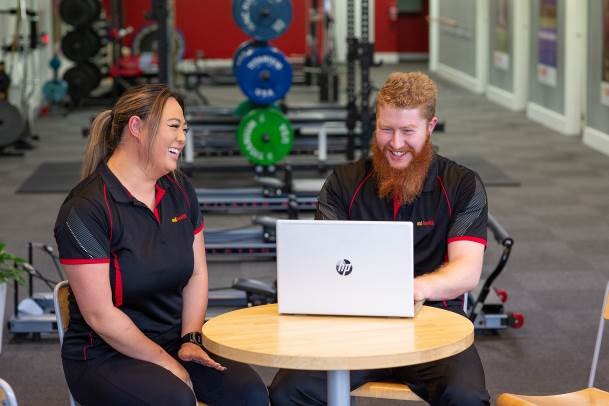In a process, wholeheartedly adopted from conversations and learning from Tristan White, physiotherapist, business owner and author of the book Culture is everything, if you want to be a great leader, you have to learn to lead yourself first.
What does this mean?
This means first and foremost, leaders are learners. Opening the door of your clinic doesn’t make you a leader. Calling yourself a boss, managing director, CEO etc. doesn’t make you a leader. Taking the steps to learn and go into discomfort to give something a go, read, learn from your mistakes and change for the better (and sometimes with a sideways step) makes you a true leader and a person other people are interested in following.
If you truly want to be a leader in your organization (no matter which level of the organization you lead (a junior physiotherapist in their first leadership role or a CEO with 500 staff), these are the 3 key steps in embracing leadership
Create a culture of learning for yourself first
Leading starts with learning and creating a culture of learning within yourself.
When was the last time you carved out time in your day to learn and go into discomfort? When was the last time you learnt something you were not confident doing?
A few years ago, I had a dream of building our own internal clinical software program. Although I had already dabbled in building “spreadsheets” on which we ran a lot of our business, I knew that if I really wanted to scale and take the business processes to the next level, I had to build more sophisticated programs.
There had been some false starts. I had received some expense quotes from software developers about building my “dream” software, but realistically, because I really didn’t understand the landscape, I didn’t know if what they were telling me was good, bad or even close to what I needed or wanted.
So, I decided to take the brave step and be the oldest and dumbest person in the room at Box Hill TAFE and learn the basics of programming. I remember the first lines of code that I wrote and how complicated it seemed to make “hello world” appear on the screen.
But here is what happened.
I got better!!!!
After a while I got confident enough to open up excel, deliberately go into the option section and allow the “developer” tab to be displayed. I taught myself VBA (the programming language that allows you to build macros in Excel) and things started to work.
This extra knowledge allowed me to have more sophisticated conversations with software developers and actually know what I wanted. After a little while, Noel Tenis, a senior software developer joined our team and together with built the Full Body Assessment System, which is the major clinical software that all of our practices use today and is the backbone of our service delivery.
It was only because I was willing to lead myself first, by being open to learning that a far out dream became a reality.
What are you learning today and how are you stepping out of your comfort zone to lead in your field?
Create structured learning into your workplace
Does your culture of learning extend to the rest of your organization? Is the rest of your team engaging in uncomfortable activities to better themselves and the business?
Beside initial training, (to ensure our staff members are up to the knowledge and customer service standard our customers deserve), we regularly (every Monday at 1pm) engage in clinical and personal development training.
Over the last few months, we have deliberately been delving into interpersonal skills, such as resilience, how to have effective conversations and most recently understanding your personal characteristic strengths and weaknesses. This was a surprising journey for a lot of the staff, to understanding the skills and personal traits that they heavily rely on at work and in life and their personal weaknesses. The purpose of this training is to help staff members understand which roles and activity best suit their personalities and preferences so they can really thrive in their jobs and their roles. In addition, it also highlighted to everyone, which skills they naturally rely on (sometimes too much) and aspects of their behaviour they may need to “dial down” for a more even approach to work.
In the end, the aim of this training is to help staff members understand themselves more, understanding each other better and to work more effectively as a team in a more enjoyable and effective way.
Creating a structure and culture where learning is possible is the role of the leaders, so that learning and change becomes the fabric of your organisation.
What structured elements have you put in place in your business that makes learning a normal process of your organisation
Give yourself and your staff permission to make mistakes
If you want to be good at something, you have to be prepared to be bad at it at first. When you first started your journey as a health professional, you were probably terrible. You didn’t have the experience, the skills or the knowledge to do a great job for your patients. (Don’t worry, either was I).
When I look back at the clinical decisions I made for the patients 25 years ago, they were pretty bad. I understand now why they didn’t achieve the results I expected and if they did get a good outcome, it was probably by shear luck or the natural healing effect of time.
This was not a bad thing, it was just the result of inexperience. We all go through this and it is the normal step of getting better and mastering your skills as a health professional.
It is unrealistic to expect our junior clinicians, junior managers and junior practice owners not to go through the same learning curve and making mistakes. It is rare, even with big mistakes, that we can’t recover (with enough time), take the brave move and admit when we made a mistake and learn from the experience.
Creating a workplace where staff members are supported through taking risks and making mistakes is one where the staff will learn faster and be about to adapt to change better when the market shifts and tough decisions have to be made.
What processes and systems do you have in your organization to support staff members through taking risks and making mistakes
Join the discussion and have your say?
- Comment below!
- Call us on (03) 9857 0644 or (07) 3505 1494 (Paddington)
- Email us at admin@mdhealth.com.au
- Check out our other Health Business blog posts here
Our clinical staff would be happy to have chat if you have any questions.



